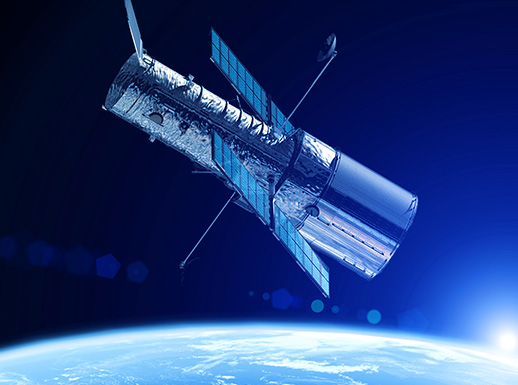
Scientific Space Telescopes
Enabling observation to reveal the mysteries of space
Space telescopes observe distant celestial objects in space by collecting and focusing light from cosmic sources onto specialized detectors. By operating in the vacuum of space, they avoid the distortions and absorption caused by Earth's atmosphere, allowing them to capture clearer images and detect light across a wider range of the electromagnetic spectrum, from infrared to ultraviolet and X-rays.
The technology within these telescopes is a marvel of modern engineering, including ultra-precise mirrors and lenses, sensitive detectors for various wavelengths, and complex onboard computers to manage observations and data.
Peering into the cosmos to build a legacy of discovery
When reliability is non-negotiable, AEM's parts ensure seamless and undisrupted communication.
AEM's RF and microwave components are critical to the communication systems of space telescopes as they transmit immense volumes of scientific data (often terabytes of images and spectral information) back to ground stations on Earth. Our high-reliability fuses are essential for protecting the sophisticated and irreplaceable electronic systems of space telescopes.
- Low noise amplifiers (LNAs) amplify faint signals received from distant celestial objects without adding significant noise that would obscure data.
- Mixers are used to shift the frequency of received signals via heterodyne detection, making it easier to process signals and extract desired information.
- Filters are used to select specific frequency bands of interest, rejecting unwanted signals and noise.
- Waveguides are used to guide electromagnetic waves from one point to another.
- High-rel fuses protect scientific space telescopes from electrical faults, which can be caused by cosmic rays, solar flares, or other surges in the space environment.
